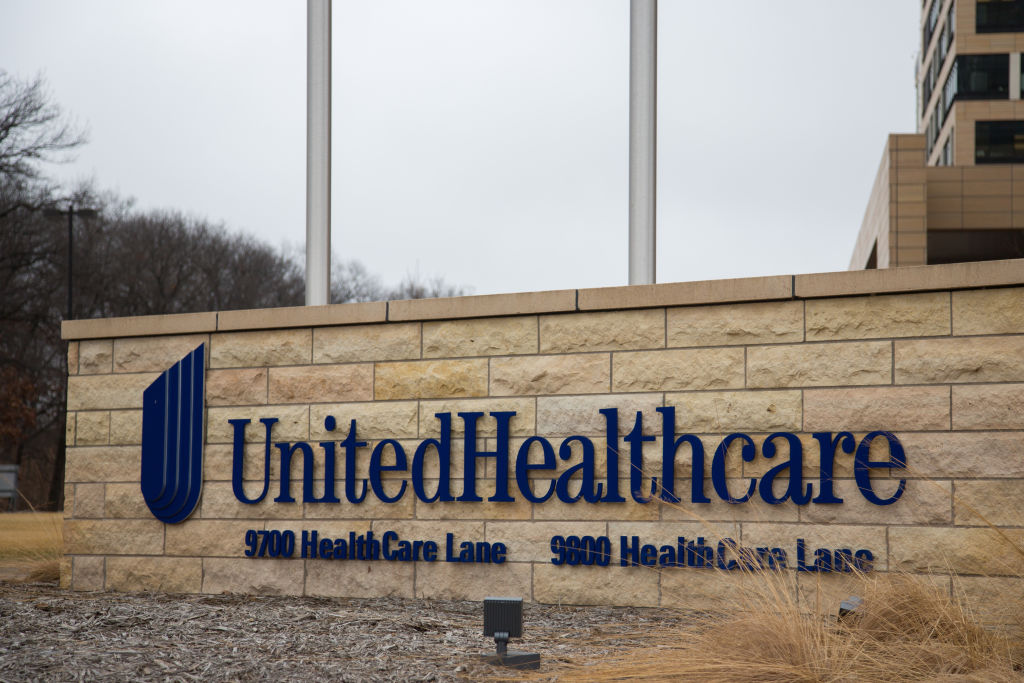M&A Is Why UnitedHealth Group Stock Is in of the 100,000% Return Club
UnitedHealth has given a master class in mergers and acquisitions over the years.


Editor's note: This is part three of a 13-part series about companies whose shares have amassed 100,000% returns for investors and the path taken to generate such impressive gains over the long term. See below for links to the other stocks in this series. Part one is: McDonald's Stock: How Small Changes Have Led to 100,000% Returns. Part two is: How Amazon Stock Became a Member of the 100,000% Return Club.
Mergers and acquisitions are exciting. Captains of industry think of big ideas about how to change the landscape of different industries and then set out to try and accomplish it with billions of other people's money. The sexy part is chasing the deal. The hard part of mergers and acquisitions is integrating what you have bought to deliver the profits or the cost savings that you forecast.
Many fail at this. Some of the worst mergers and acquisitions in history include Sears and Kmart, Citicorp and Travelers Group, Microsoft and Nokia, and, of course, no list would be complete without mentioning AOL and Time Warner.

Sign up for Kiplinger’s Free E-Newsletters
Profit and prosper with the best of expert advice on investing, taxes, retirement, personal finance and more - straight to your e-mail.
Profit and prosper with the best of expert advice - straight to your e-mail.
What UnitedHealth Group (UNH) has done perhaps better than any other company in American history is to buy companies – which, as mentioned, is something any company can do – and then integrate them into a cash-generating machine, which, as mentioned, is something few companies can do.
Testimony to UnitedHealth Group's skill in integrating the companies it buys shows up on its bottom line. Specifically, since 2005 (the oldest year for which its financial performance figures are readily available), the company has never reported a loss. Quite the contrary. UnitedHealth has grown its earnings from $3 billion that year to $23.1 billion in 2023. This represents average earnings growth of 12.0% per year. First, very few companies have gone nearly 20 years without a loss, especially those who are acquisitive.
Second, almost nothing of value grows at 12% per year. The U.S. economy doesn't (about 3%). The Standard & Poor's Index doesn't (about 7.7% over the last 20 years). The Nasdaq Composite Index doesn't (about 10.9% over the last 20 years).
But UnitedHealth does.
Since 2004, UnitedHealth has made approximately 17 major acquisitions of insurance, healthcare and healthcare technology companies. And these are the ones that are easily discoverable since they were disclosed in news releases. And the bar for issuing news releases is high.
Companies must disclose transactions that are considered "material" which is defined as greater than 5% of the issuer's assets. Since UnitedHealth's assets at the end of 2023 were $273 billion, this means any acquisitions smaller than $5.8 billion (5% of $273 billion) may not be generally known.
The things that can go wrong when one company acquires another range from the unexpected to the inane. Sometimes their technology proves incompatible. Sometimes integrating the operations takes orders of magnitude longer than imagined. Sometimes there are cultural clashes. Sometimes customers balk, then walk, at the changes that are imposed on them.
Whatever the various sources of distress, they either retard earnings growth or they deliver losses. Slowing growth is bad news on Wall Street because the market is in the growth game. It's the single most important variable influencing stock values.
The only thing Wall Street likes less than slowing growth are losses. Some losses are more consequential than others. Losses predicted on software incompatibilities, or boardroom clashes, while not embraced, can still leave room for optimism of brighter days ahead. But a write-down of say, $99 billion, attributable to all the reasons above, and then some, which was taken just two years after AOL and Time Warner merged can be fatal for a company's future and investor's capital.
Even a company whose overriding strategy is M&A can spook investors because the risks of integration are well known. And this is what puts UnitedHealth Group's performance in context, and helps explain a 400,000% return.
Notably, UNH has suffered a precipitous decline of late, from about $550 to $467. That's the thing about the stocks in the 100,000% club. They don't just go up. They go down too. UNH went from a high of nearly $65 in 2005 to a low of $19 in early 2009, a stunning loss of two-thirds of its value. There are similar stories for Nvidia and Amazon. Over the long haul, UNH had risen more than 300,000% but for an investor to earn this, they needed conviction and lots of it.
Note: This content first appeared in Louis Navellier's latest book, The Sacred Truths of Investing: Finding Growth Stocks that Will Make You Rich, which was published by John Wiley & Sons, Inc.
Related content
Get Kiplinger Today newsletter — free
Profit and prosper with the best of Kiplinger's advice on investing, taxes, retirement, personal finance and much more. Delivered daily. Enter your email in the box and click Sign Me Up.

-
 6 Stunning Waterfront Homes for Sale Around the US
6 Stunning Waterfront Homes for Sale Around the USFrom private peninsulas to lakes, bayous and beyond, Kiplinger's "Listed" series brings you another selection of dream homes for sale on the waterfront.
By Charlotte Gorbold Published
-
 Six Reasons to Disinherit Someone and How to Do It
Six Reasons to Disinherit Someone and How to Do ItWhether you're navigating a second marriage, dealing with an estranged relative or leaving your assets to charity, there are reasons to disinherit someone. Here's how.
By Donna LeValley Published
-
 Should You Still Wait Until 70 to Claim Social Security?
Should You Still Wait Until 70 to Claim Social Security?Delaying Social Security until age 70 will increase your benefits. But with shortages ahead, and talk of cuts, is there a case for claiming sooner?
By Evan T. Beach, CFP®, AWMA® Published
-
 Retirement Planning for Couples: How to Plan to Be So Happy Together
Retirement Planning for Couples: How to Plan to Be So Happy TogetherPlanning for retirement as a couple is a team sport that takes open communication, thoughtful planning and a solid financial strategy.
By Andrew Rosen, CFP®, CEP Published
-
 Market Turmoil: What History Tells Us About Current Volatility
Market Turmoil: What History Tells Us About Current VolatilityThis up-and-down uncertainty is nerve-racking, but a look back at previous downturns shows that the markets are resilient. Here's how to ride out the turmoil.
By Michael Aloi, CFP® Published
-
 Stock Market Today: Stocks Surge to Close a Volatile Week
Stock Market Today: Stocks Surge to Close a Volatile WeekIt was another day with a week's worth of both news and price action, but it ended on a strongly positive note.
By David Dittman Published
-
 Which Stocks Stayed Green as the Market Plummeted?
Which Stocks Stayed Green as the Market Plummeted?Only a handful of S&P 500 stocks managed to generate gains during the market's historic four-day plunge.
By Dan Burrows Published
-
 Home Insurance: How to Cut Costs Without Losing Coverage
Home Insurance: How to Cut Costs Without Losing CoverageNatural disasters are causing home insurance premiums to soar, but don't risk dropping your coverage completely when there are ways to keep costs down.
By Jared Elson, Investment Adviser Published
-
 Markets Roller Coaster: Resist the Urge to Make Big Changes
Markets Roller Coaster: Resist the Urge to Make Big ChangesYou could do more harm than good if you react emotionally to volatility. Instead, consider tax-loss harvesting, Roth conversions and how to plan for next time.
By Frank J. Legan Published
-
 Why Homeowners Insurance Has Gotten So Very Expensive
Why Homeowners Insurance Has Gotten So Very ExpensiveThe home insurance industry is seeing more frequent and bigger claims because of weather, wildfires and other natural disasters.
By Karl Susman, CPCU, LUTCF, CIC, CSFP, CFS, CPIA, AAI-M, PLCS Published